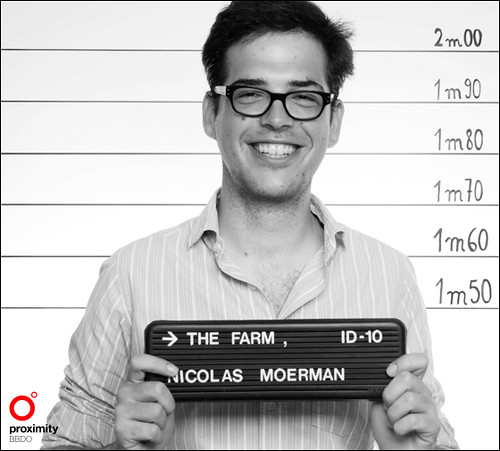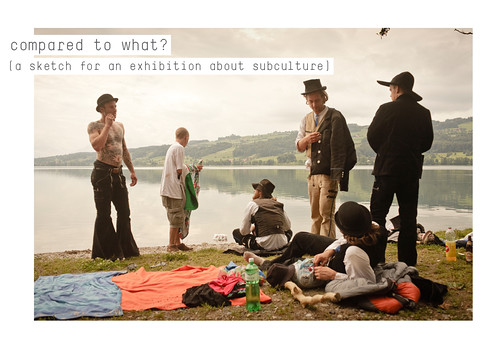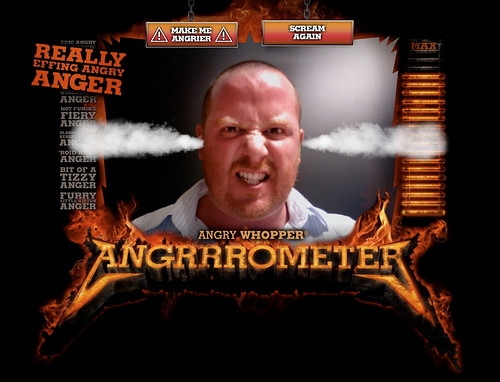I'm currently reading
Juicing the Orange by
Fallon and Senn. Blown was I, when my eyes hit the third page. The third page shows the opening ad of
Fallon McElligott Rice. A manifesto with an almost absurd amount of copy. Certainly because straight down (long)copy ads were long time out of fashion by the time the ad ran, July 20, 1981. They felt it was essential to articulate their vision. Twenty-five years later, the statistics are worse, and globalization and technology have changed the marketing environment, but the solution is the same: applied creativity. I read the tiny typeset ad 4 bloody times in a row. Because it was a nifty crafted piece of copy, but mostly because what the ad said was so "now" even though it ran 28 years ago.
Like so many in our business I find myself a numerous amount of times listening to some self-proclaimed guru who walks the talk and thinks he himself should be awarded a medal for sharing his mastermind visions with you. More often than not scraping pieces from manifesto's of some decades ago. It sickens me to see and hear these gut-shots claim eternal greatness while the same story has been told much better by guys who've shaped the industry years ago. Lots of people waive
Ogilvy's rules and bold statements as old fashioned and out of business. But, many seem to have forgotten that he cemented the foundations of the industry, and envisioned the rise and importance of Direct long time ago. He should be studied and praised by everyone who tries to advertise anything at all. As too for this legendary Fallon ad which I've included further down this post. Of course one must note that the ad sings widely from the
Bernbach bible but its message and content remains key to what most agencies strife for nowadays.
A new advertising agency for companies that would rather outsmart the competition than outspend them."I know that only half of my advertising works. The trouble is I don't know which half."—
John WanamakerIf you're spending money on advertising, you've probably wondered: Is anybody out there listening?
The answer to that question is a shock.
Consider the following facts: American business will spend over $54 billion on advertising this year. According to one estimate cited in
The Journal of Advertising Research, that money will buy over 200 thousand messages per person, or approximately 560 messages every day for every man, woman and child in America.
Of those 560 messages, the average person will notice only 76.
Of those 76, only 12 will be remembered.
And of those 12, 3 will be remembered negatively.
From 560 to 76 to 12 to 9 —
an attrition rate of more than 98%!Sobering isn't it?
But the news gets worse before it gets better.
The clutter trap.In an effort to counteract the dwindling effectiveness of their messages, more and more companies increase their media frequency.
This leads to clutter.
Advertisers like
Wisk and Sanka, once content to run their shrill, tedious commercials several times a week, now may run them several times an hour, trying to bore their way into the consumer's consciousness.
Ironically, while the number of messages (and media costs) have doubled in the past several years, consumers pay less attention than ever before.
In fact, a growing body of evidence suggests that increased frequency may actually be self-defeating.
In 1976,
The Harvard Business Review warned,
"Heavy media spending can even work against you... repeated exposure to an advertisement may give rise to what psychologists label 'perceptual defense', to irritation, or even outright rejection."Raising awareness, Not budgets.It's clear that if you want to be one of the precious few that are remembered — less than 2% — you've got your work cut out for you. Outspending the competition is increasingly expensive and, as we've seen, may even work against you.
Instead of trying to
outspend the competition, why not try to
out-think them? With messages so interesting that even the most indifferent consumer will stop and look.
According to researcher Daniel Starch, one advertisement can outperform another advertisement for the same product in the same media at the same time by 500%.
Obviously, the preferred way to improve effectiveness is not to increase the
spending level of your advertising, but to increase the
interest level of your advertising.
Scarcity of imagination.Unfortunately, raising the interest level of your advertising is easier said than done. The creative imagination to make great advertising —
advertising that builds bridges between products and customers — is rare.
As
The Harvard Business Review once observed,
"...creativity is like peace. Everybody wants it, everyone seems to have some ideas about it, but nobody seems able to produce it."Once every several years, however, an advertising agency with the ability to produce truly exciting, original and compelling advertising appears. Fallon McElligott Rice is such an agency.
Although we've just opened our doors, the campaigns we've created at past agencies are famous. They've won market share for our clients, and a lion's share of awards for us. They've been studied in journalism schools, and copied by our competitors. In every case, these campaigns
seemed like they had more money behind them than they did.
The ideas weer big; the budgets small.
What we believe.At Fallon McElligott Rice we believe in advertising the way
Ray Rubicam,
Leo Burnett,
David Ogilvy and
Bill Bernbach once practiced it.
We believe that imagination is one of the last remaining legal means you have to gain an unfair advantage over your competition.
We believe you shouldn't have to repeat yourself ten times to be heard once.
We believe there is no such thing as a "me-too" product, only "me-too" advertising.
And we believe that great advertising is, has been, and always will be created in full partnership with great clients.
If you're beginning to have some questions about whether anybody out there is listening to
your advertising, perhaps you should talk to us. Soon.
We have a lot of ideas, a lot of energy, and a lot to prove.
This ad is everything I believe in, it is what drives most of us to fight the horror of
adverbatims today. Please consider addressing me to talk about the content of this post in depth. Soon.




